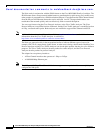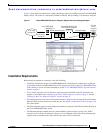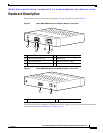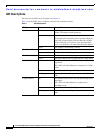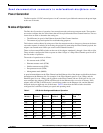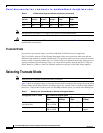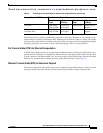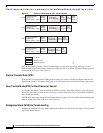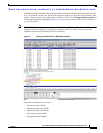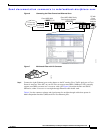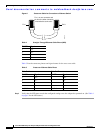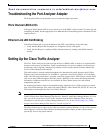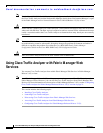
Send documentation comments to mdsfeedback-doc@cisco.com.
4
Cisco MDS 9000 Family Port Analyzer Adapter Installation and Configuration Note
OL-9077-01
Overview
Cisco MDS 9000 SPAN Usage Instructions
On the Cisco MDS 9000 Family switch, traffic through any Fibre Channel interface can be replicated to
an SD port. When a port is configured in SD mode, a copy of traffic (ingress, egress, or both) from a set
of configured ports is sent to the SD port.
Tip Configure the extended inter-switch link (EISL) mode using the switchport encap eisl command if you
need to debug or analyze VSAN-specific information.
Note For information on configuring the SPAN feature, see the Cisco MDS 9000 Family CLI Configuration
Guide.
A valid Fibre Channel port on a Cisco MDS 9000 Family switch must be configured as an SD port. Once
a Fibre Channel port is in SD port mode, it cannot be used for normal data traffic.
In SD port mode, the Fibre Channel port of the switch has the following characteristics:
• Packets are always output from the port (egress). The port never receives any frames.
• The port cannot be flow-controlled.
• No handshaking is performed.
• The receiving device does not need a Fibre Channel address.
The following usage considerations apply to a PAA connected to a Cisco MDS 9000 Family switch:
• The adapter receives data only; the adapter does not transmit data to the switch.
• The LED on the Fibre Channel SD port on the switch cannot be used to diagnose a problem.




